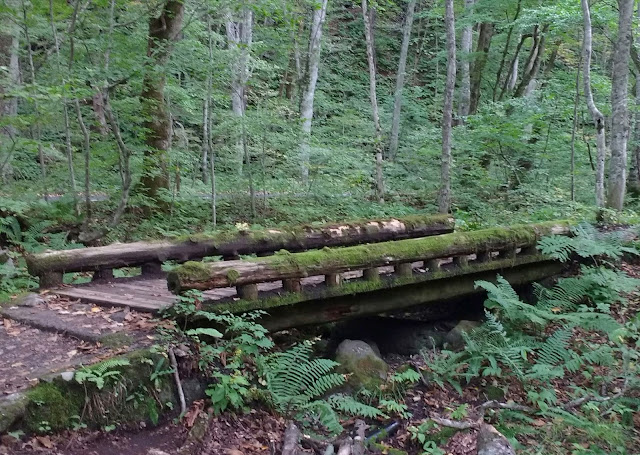Origins of Haiku
Haiku originated as oral poetry, according to Poets.Org, in thirteenth century Japan, an offspring of renga--a collaborative poem of one hundred stanzas, composed by a gathering of poets. The host or master poet offered up the first seventeen syllable (three line, 5-7-5) poem, and this inspired the next. Taking turns, each poet contributed, creating poems on the spot. Saké drinking was involved, so it's easy to imagine that these gatherings got progressively more raucous as poets attempted to outdo each other. Although there were plenty of female poets, it's doubtful that many (or any) attended these boisterous parties.
Women, in earlier times, wrote mostly Tanka, traditional courtly verse composed of thirty-one syllables written in five lines of 5-7-5-7-7.
 |
Photo taken at Tokyo National Museum 雨雨雨 Matsuo Basho (1644-1694) In the seventeenth century, the three opening lines of renga, called hokku, evolved into standalone poems--the form of haiku with which we are familiar. Basho, the famous early master of this style, spent many years traveling throughout Japan scattering the haiku he wrote like seeds. Those seeds took root, spreading far and wide, evolving through the centuries. Basho is best know for his haiku about an old pond and a frog. Here are thirty-two translations. However, do yourself a favor and read his masterpiece, Narrow Road to the North and Other Travel Sketches, written on the final journey, made on foot--a haiku travelog, combining prose and poetry, observations about life, nature, and people. This new form Basho created came to be known as Haibun. You can even make a pilgrimage, tracing the Master's footsteps, and walk the path Basho walked along. Many fine books about Basho are available. Including, Basho: The Complete Haiku Annotated Edition the three vertical lines of text on the right are the three lines of a haiku 雨雨雨 |







Comments
Post a Comment